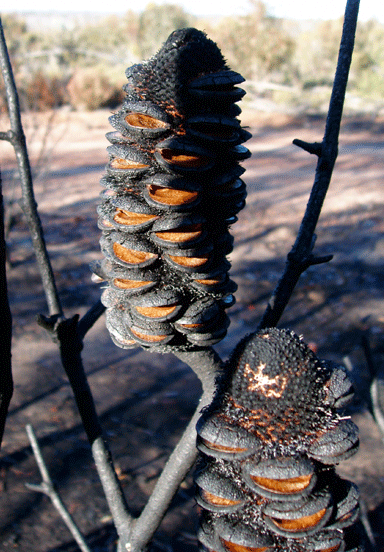
|
Published:
Firing up biodiversity in the wheatbelt
Improved fire management could benefit native vegetation and biodiversity in Western Australia’s wheatbelt, according to a research project run by the Department of Environment and Conservation (DEC) and CSIRO Sustainable Ecosystems.

|
|
Seeds of many wheatbelt plant species, such as Banksia media, are protected by their woody fruits and are released after the passage of fire. Credit: C. Gosper, CSIRO
|
The Western Australian wheatbelt region, which partially surrounds Perth, has an area of approximately 155?000 square kilometres. It is part of a globally recognised biodiversity hotspot, due to its diverse plant communities.
Dr Carl Gosper, a scientist working with both CSIRO and DEC, says that nature reserves in the wheatbelt are mostly small and isolated, and are usually surrounded by agricultural land.
‘Because fires have been suppressed in landscapes of this nature in the past, fires in reserves have been infrequent, and there has been little understanding of the consequences for flora that would have originally been more exposed to fires,’ Dr Gosper says.
‘Our research shows that fire is a viable option for biodiversity conservation in intact mallee remnant interiors, because it does not exacerbate weed invasions. Remnant edges, however, are susceptible to weed invasion irrespective of fire management. Nutrient enrichment of soils by adjoining agricultural activities, and an abundant supply of weed seeds, such as from annual non-native grasses, make reserve edges highly susceptible to weed invasion.’
The next stage of the research will help determine suitable fire frequencies.



